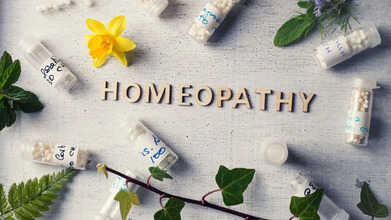- Health Conditions A-Z
- Health & Wellness
- Nutrition
- Fitness
- Health News
- Ayurveda
- Videos
- Medicine A-Z
- Parenting
Planning To Retire Abroad? This May Not Be The Best Idea, Finds Study

Credits: Canva
Everyone likes when their hard work pays off. Years of service is usually awarded by foreign trips or retiring abroad. This is the life when you transition to a life of non-work activities, whether it is travelling, diving into personal projects or even learning or new language. However, while all these plans to do all this in an affordable country seem like a great warm experience, it may have its downside: loneliness.
A latest study published in Psychology and Aging, titled Trouble In Paradise? Emotional and Social Loneliness Among International Retirement Migrants, suggests that retirees who move abroad often experience a greater social isolation than those who say in their home state.
How Was The Research Conducted?
The researchers compared nearly 5,000 Dutch retirees living abroad to more than 1,300 who stayed in Netherlands. The study found that retirees who moved overseas were socially isolated and even though they were also often healthier and wealthier than the ones who stayed back.
The lead author of the study, Esma Betül Savaş, who is also a doctoral researcher at the Netherlands Interdisciplinary Demographics Institute said in a news release, "although these retirement migrants generally report being happy, they may still face struggles adapting to a new country."
How Does Social Loneliness Occur?
This happens when you have a lack of broad circle of friends, whereas emotional loneliness is tied to lack of close friends and partners. You may have tons of friends, but no one to share deep thoughts with.
However, those who stayed back stayed connected with their friends and family back home, in fact, some of them were able to strengthen their relationships after retirement. However, there was also another group of retirees, those who built strong relationships in their new country and felt less isolated.
Researchers also found that those who engaged with their neighbors and felt a sense of belonging in their new home had lower levels of social loneliness. “Older adults may face double jeopardy in retiring to a new country as they are vulnerable to both age-related and migration-related risk factors for loneliness, and loneliness is itself a risk factor for adverse health outcomes,” Savaş said.
“It’s important for people considering retirement migration to think about how they can maintain their social ties in their origin country and make new ones in their destination country,” she concluded.
ALSO READ: How Old Are Your Organs? New Study Links Organ Aging to Disease Risk
What Can Social Loneliness Do At An Older Age?
As per the National Institute on Aging, social isolation and loneliness may be bad for brain health. These have been linked to poorer cognitive function and higher risk of dementia, including Alzheimer's disease. Furthermore, little social activity and being alone also makes it more difficult to perform everyday tasks such as driving, paying bills, taking medicines, and cooking.
It could lead to:
- Loss of mobility
- Vision or hearing problems
- Psychological or cognitive challenges
- Feeling a lack of purpose
- Financial struggles
- Living alone
- Lack of transportation
- Inability to leave home without help
Could Donald Trump Have Tertiary Stage Syphilis? Here’s Why This Doctor Believes It’s Possible

Credits: AP
Donald Trump’s health has long been under scrutiny, and a recent Instagram post by a physical therapist, @epistemiccrisis, who holds a doctorate and has 14 years of experience treating dementia patients, has stirred fresh speculation. The doctor discussed how tertiary stage syphilis, also known as neurosyphilis, can closely mimic the symptoms of behavioural variant frontotemporal dementia.
What Is Tertiary Stage Syphilis?
Tertiary syphilis is the late stage of a syphilis infection, and it is relatively uncommon, usually appearing years or even decades after the initial infection. Its manifestations can vary, but the most common forms include cardiovascular syphilis, central nervous system involvement—classically presenting as tabes dorsalis or general paresis—and gummatous syphilis, which most often affects the liver. In the United States, syphilis is considered a reportable illness, meaning cases must be reported to public health authorities.
Tertiary Stage Syphilis And The Brain
Tertiary stage syphilis occurs when the infection remains untreated for years, potentially causing serious neurological complications. Before antibiotics were widely available, neurosyphilis accounted for roughly 15% of psychiatric inpatients, as per the doctor. The disease can damage the frontal and temporal lobes, producing behavioural changes strikingly similar to dementia.
Case Study Explains The Symptom Overlap
The doctor referenced a PubMed case study of a 47-year-old male whose behaviour drastically changed, leading to psychiatric admission. The patient showed extreme disorientation and poor hygiene, including rubbing his own faeces in his hair. After receiving antibiotics, his symptoms resolved, and brain scans later revealed improved blood flow to the frontal lobe.
Could Donald Trump Have Tertiary Stage Syphilis?
Red marks on Trump’s hands have sparked discussion about possible tertiary stage syphilis. However, the doctor noted that untreated syphilis in someone of Trump’s age would generally produce more severe complications, making the likelihood low. Additional health factors, including possible history of stroke, heart issues, and kidney disease, further complicate speculation.
Are Frontotemporal Dementia and Tertiary Syphilis Related?
Donald Trump has been speculated to show signs of frontotemporal dementia, a condition affecting behavior, personality, and decision-making. Interestingly, tertiary stage syphilis, specifically neurosyphilis, can cause similar symptoms by damaging the frontal and temporal lobes. Both conditions may lead to changes in social behavior, judgment, and cognitive function, making it challenging to differentiate without proper medical evaluation. Unlike frontotemporal dementia, which is progressive and currently incurable, tertiary syphilis is treatable with antibiotics, underscoring the need for accurate diagnosis.
Is Tertiary Stage Syphilis Treatable?
Neurosyphilis is treatable with antibiotics, and early detection is critical. The case study highlights how the condition can mimic dementia, emphasizing the need for careful evaluation—even for high-profile figures like Donald Trump.
Disclaimer: The claims discussed in this article are being made by the Instagram user @epistemiccrisis. Health & Me does not verify or endorse these claims, and this content is intended for informational purposes only, not as a medical diagnosis or advice.
Ayush Mark Explained: What Is This New Global Standard Label For Traditional Medicine?

Credits: Canva
Prime Minister Narendra Modi unveiled the Ayush Mark at the Second WHO Global Summit on Traditional Medicine on Friday. The Ayush Mark is envisioned as a global standard for quality Ayush products and services. The WHO Global Summit on Traditional Medicine was held at Bharat Mandapam from December 17 to December 19, 2025, with this year’s theme, “Restoring balance: The science and practice of health and well-being.” Speaking at the closing ceremony, PM Modi highlighted India’s rising leadership in promoting traditional medicine as an evidence-based, integrated, and people-focused part of global health systems.
Alongside the Ayush Mark, PM Modi also introduced the My Ayush Integrated Services Portal (MAISP), the central digital platform of the Ayush Grid, released a commemorative Ashwagandha postal stamp, the WHO technical report on Yoga training, and the book “From Roots to Global Reach: 11 Years of Transformation in Ayush.” He also presented the Prime Minister’s Awards for Outstanding Contribution to the Promotion and Development of Yoga, recognizing both national and international individuals and organizations for their exceptional service.
Speaking at the event, he said, “Over the past three days, experts from across the world in traditional medicine have held meaningful discussions here. I am glad India is providing a strong platform for this, and the WHO has actively participated. It is our good fortune and a matter of pride that the WHO Global Centre for Traditional Medicine has been established in Jamnagar, India. The world entrusted us with this responsibility with great confidence at the first Traditional Medicine Summit.”
What Is The Ayush Mark?
The Ayush Mark is a label issued by the Ministry of Ayush for Ayurveda, Yoga and Naturopathy, Siddha, Unani, and Homoeopathy products and services. The Ayush Mark Certification Scheme has been run by the Quality Council of India (QCI) since 2009.
Products and services carrying the Ayush Mark follow quality manufacturing practices, use standard raw materials, and undergo safety testing. The Ayush Mark and its two previous certification levels have existed for several years. The new label builds on them and aims to set a global benchmark for traditional medicine products and services. Earlier certifications included the Ayush Standard Mark and the Ayush Premium Mark.
The Ayush Standard Mark follows Good Manufacturing Practices (GMP) for Ayurvedic, Siddha, and Unani medicines under Schedule T of the Drugs and Cosmetic Rules, 1945. The Ayush Premium Mark is aligned with WHO GMP guidelines for herbal medicines.
Dr Tedros Adhanom Ghebreyesus, WHO Director-General, also attended the WHO Global Summit on Traditional Medicine. He praised PM Modi for elevating traditional medicine to a global platform. Dr Tedros commended India for turning vision into action, calling the country a global leader in transforming traditional medicine from heritage to evidence-informed practice. He highlighted landmark initiatives like the establishment of the Ministry of Ayush and the WHO Global Centre for Traditional Medicine in Jamnagar, noting these efforts have strengthened the integration of traditional medicine into health systems, research, and policy, supporting universal health coverage and sustainable development worldwide.
Global Recognition and Impact of Ayush Mark
The Ayush Mark is not just a certification but a step toward placing Indian traditional medicine on the world stage. By setting internationally recognized quality benchmarks, it aims to boost confidence among global consumers and practitioners, encouraging the adoption of Ayurveda, Yoga, Naturopathy, Siddha, Unani, and Homoeopathy products and services worldwide. This initiative reinforces India’s role in shaping evidence-based, safe, and sustainable traditional medicine practices across borders.
What Is Denmark’s Childhood Vaccination Schedule That RFK Jr. Is Considering For The U.S.?

Credits: Canva
The Trump administration is reportedly preparing to announce changes to the childhood immunisation schedule early next year, with a proposal that would recommend fewer vaccines and bring U.S. policy closer to Denmark’s model. A source familiar with the discussions told NewsNation correspondent Libbey Dean that the revised schedule, expected next year, would involve fewer shots and would be “more in line with Denmark’s vaccination schedule,” according to The Hill. This has raised an important question: what does Denmark’s vaccine schedule look like, and is it realistic for the U.S. to follow it?
Denmark Vaccine Schedule: What Is It?
Denmark runs a clearly defined childhood vaccination programme that is free and voluntary, aimed at protecting children from serious infectious diseases. Infants are given combination vaccines that cover diphtheria, tetanus, whooping cough, polio, and Haemophilus influenzae type b, along with the pneumococcal vaccine, at 3, 5, and 12 months. Children receive their first dose of the measles, mumps, and rubella (MMR) vaccine at 15 months, with a second dose at 4 years.
A booster shot for diphtheria, tetanus, whooping cough, and polio is administered at 5 years. Around the age of 12, both boys and girls are offered the HPV vaccine to reduce the risk of cancers linked to the virus. Vaccines for chickenpox, rotavirus, hepatitis A, or meningococcal disease are not routinely included in Denmark’s standard schedule, according to official guidance from the Danish Health Authority’s Childhood Vaccination Programme.
RFK Jr. Is Considering Denmark Vaccine Schedule For US
Reports suggest that the Department of Health and Human Services (HHS) is exploring additional changes to federal childhood vaccine recommendations, with a focus on aligning them more closely with those followed by other developed nations, especially Denmark, as per The Washington Post. This discussion comes after a meeting earlier this month of the CDC’s Advisory Committee on Immunization Practices (ACIP), where childhood vaccine schedules in the U.S. and Denmark were reviewed and adjustments to the U.S. schedule were made. It was followed by a memorandum from President Trump directing HHS to begin a “process to align U.S. core childhood vaccine recommendations with best practices from peer, developed countries.”
Denmark Vaccine Schedule: What Happens If the US Adopts It?
If the U.S. were to adopt Denmark’s schedule in full, it would result in fewer vaccines being recommended for children up to age 18. When comparing vaccines that are universally advised in both countries, Denmark’s programme covers protection against 10 diseases, while the U.S. schedule includes vaccines for 16 diseases, following the removal of hepatitis B from universal recommendations. The additional vaccines recommended in the U.S. address respiratory syncytial virus (RSV), rotavirus, varicella, hepatitis A, and meningococcal disease. Although the U.S. advises more childhood vaccines than many comparable countries, Denmark stands out for recommending fewer than most. Data from the European Centre for Disease Prevention and Control (ECDC) vaccine scheduler shows that none of the other 29 ECDC member countries limits its routine childhood schedule to just 10 diseases. Several countries, including Germany, Greece, Ireland, Italy, and Poland, recommend vaccines against 15 or more diseases, while Austria’s schedule covers 17 diseases, which is even more than the U.S. currently recommends.
Every country follows its own process when setting vaccine recommendations, shaped by its specific circumstances. Childhood immunisation schedules are built over years by reviewing available evidence and weighing factors such as healthcare systems, insurance coverage, public health infrastructure, and national priorities. This explains why vaccine schedules vary across countries, and so far, no developed nation has based its decisions solely on what another “peer” country does.
Importantly, Denmark’s approach is not based on a different interpretation of vaccine science or effectiveness. Instead, Danish health authorities prioritise recommending vaccines that significantly lower the risk of death or serious illness in children. For instance, while rotavirus infections do occur among children in Denmark, they rarely result in death or long-term harm in a setting with universal healthcare access, strong medical systems, and lower inequality than in the U.S. By contrast, neighbouring countries such as Norway and Finland do include the rotavirus vaccine in their routine schedules, as does the U.S., where before the vaccine was introduced, rotavirus caused an estimated 2.7 million infections each year, leading to 55,000 to 70,000 hospitalisations and 20 to 60 deaths among children under five.
© 2024 Bennett, Coleman & Company Limited

